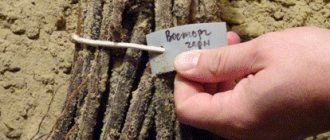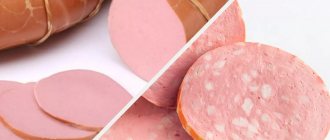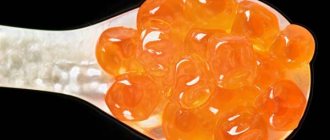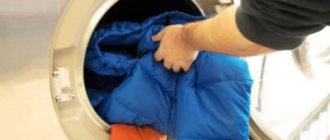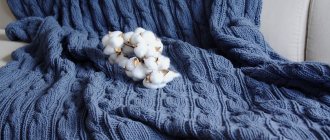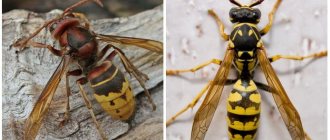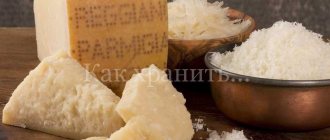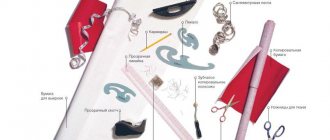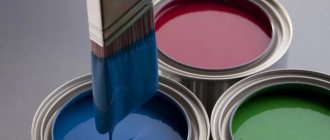What is padding polyester
Sintepon is a non-woven fabric that has good thermal conductivity, similar to wool or cotton. However, in production there is no general agreement on the concept of “sintepon” due to the lack of certain requirements for its quality. For this reason, synthetic fiber is usually called synthetic fiber, as well as the fabrics and layers in the production of which it is used .
Properties and features of this material
Today, synthetic winterizer is called one of the most popular non-woven materials. Its demand is due to a number of unique properties:
- Good thermal insulation. The material is often used in the cold season.
- Little weight. Things made from padding polyester are very light.
- Preservation of shape. The material does not deform after washing.
- Safety. Sintepon is non-toxic, does not electrify, does not attract dust, and is not suitable for the reproduction of dust mites.
- Long-term use. The material retains its shape for a long time and, if necessary, quickly restores it.
- Hypoallergenic.
- Low price. The most accessible material due to its low cost.
High-quality synthetic padding is characterized by amazing softness. Synthetic
padding is a light, voluminous, loose non-woven fabric consisting of synthetic fibers, they are obtained from primary and secondary raw materials . High-quality synthetic padding is characterized by high strength and at the same time amazing softness, which is ideal for comfortable pillows and bedspreads.
Sintepon is only suitable for moderate cool temperatures. In severe frosts, a thing with such a filling will not warm you up, and in rainy or snowy weather it will immediately get wet.
In recent years, recycled materials or melted plastic waste (plastic bottles, disposable tableware, etc.) are most often used to produce padding polyester. It should be noted that the cost of such products is lower, but the quality is worse. In this regard, cheap padding polyester is often called a fake.
High-quality padding polyester does not shine. There are no cavities in its fibers, so it should not be transparent. The presence of a hard crust on the surface of the padding polyester indicates that it has caked and will not be able to return to its original shape. High-quality thick padding polyester can be easily divided into several layers. Imperceptibly changes its shape to a thinner one. Poor quality padding polyester will not be able to stretch and will immediately tear. High-quality synthetic padding does not wrinkle.
We advise you to carefully examine the contents on the label and give preference to the improved options of padding polyester described below.
What determines the quality of padding polyester?
The quality of padding polyester, like any other product, depends on the production method, composition and raw materials used, which can be primary and secondary.
Sintepon made from recycled materials - used plastic bottles, bags - of lower quality. It is not so snow-white, it has grayish, brown, yellowish shades. Its density is also uneven, it is less springy, may have an unpleasant odor or cause allergies.
If financial possibilities allow, you should give preference to padding polyester made from primary raw materials. It is safer, has better characteristics and an attractive appearance.
Each manufacturer develops its own parameters for the degree of thermal protection. There are many types of insulation and their properties differ significantly. There is one general rule for one type of padding polyester: the thinner the material, the warmer the weather it is intended for and vice versa. Regular bulk padding polyester with a density of 400 g. per sq.m. It is recommended to use for winter clothes, which are intended for frosts down to minus 25 degrees.
At the same time, thinner thinsulate can protect from frosts of minus 50-60 degrees. Therefore, here it is necessary to focus on the characteristics declared by the manufacturer.
In order not to be disappointed in the quality of the finished product, it is also necessary to take into account the structure of the padding polyester. Some types are better suited for clothing, others for pillows, and others for stuffing textile dolls or felting.
Types of synthetic insulation
There are the following types of materials, united under the single concept of “sintepon”, but they have independent definitions:
- Sherstepon is a material based on sheep wool. Its presence in the structure is environmentally friendly and has the ability to better retain heat. Most often, sherstepon is used to make blankets.
Sherstepon is a new generation of non-woven domestic insulation made from a mixture of natural wool and polyester fibers - Synthetic fluff consists entirely of artificial polyester fibers and is obtained by combing. This type of material is very soft, elastic and warm. It is also called an analogue of natural fluff. Synthetic fluff is hypoallergenic due to the absence of glue.
Synthetic fluff, which is produced using the latest technology, contains many of the finest polyester fibers - Hollofiber is a material made of hollow fibers, the production of which uses a thermal bonding method. It is practical and able to stay dry in wet conditions.
Holofiber is also suitable for making outerwear - Sinteplast is a voluminous and elastic material with a large amount of silicone. The fabric is used as a lining for upholstered furniture, as well as when sewing blankets.
Synthetic plastic is used in the production of mattresses and upholstered furniture: it is used to form the curves of sofas and armchairs
What is made from padding polyester
Synthetic winterizer is used in the manufacture of the following products:
- Outerwear - it is used to insulate jackets and children's overalls, winter down jackets and windbreakers.
- Pillows, blankets and mattresses.
- As a filler for soft toys.
- Filters for some aquarium models
- Furniture - use dense material.
Synthetic fibers are often used as the basis for fabrics used to insulate rooms. The material is used in construction work.
The cheaper the padding polyester, the higher the likelihood that it is made from recycled materials, which release toxic substances that can trigger allergies.
Photo gallery: products made from padding polyester
Jackets with synthetic padding protect against frost
Toys with synthetic padding retain their shape perfectly
Pillows and blankets with synthetic padding are soft and comfortable for sleeping
Synthetic winterizer is used in construction to insulate rooms.
Video: how blankets and pillows with synthetic filling are made
Manufacturing methods
The volume, weight, quality, cost of accessories made from padding polyester depend on the method of connecting its fibers:
- Thermal - obtained under the influence of high temperature. Thermally bonded material is also called eurosintepon. It retains heat and shape better, and tolerates washing and drying well. Harmless and safe for the environment.
- Needle-punched - to fasten synthetic fibers, curved needles with barbs are used that pass through the threads and fix them well. The material produced by this method is of high quality. It is most often used to produce soft toys and children's bedding.
- Glue (emulsion) is the cheapest method of producing the material, but it is environmentally unsafe. In the process of joining the fibers, a special latex glue is used. As a result, the synthetic winterizer is not as high quality as that made from needle-punched and thermal synthetic winterizer. After washing, the product quickly loses its original appearance.
Caring for things with padding polyester filling
It’s clear what padding polyester is made of, now you need to decide how to care for it:
- Hand wash or machine wash on delicate cycle is suitable;
- you need to wring things out manually;
- It is recommended to dry in the fresh air or in a well-ventilated area;
- if there are stains on the product (often happens with children's clothes or toys), they must first be removed by soaking the item in a stain remover;
- When washing, use a water temperature of no more than 30 °C;
- You cannot iron or steam things, because synthetics melt under the influence of high temperatures.
How to wash synthetic fillers
Advantages and disadvantages of padding polyester
Sintepon has a number of advantages and disadvantages.
The advantages of the material include:
- flexibility and strength;
- light weight;
- excellent thermal insulation;
- flexibility and strength;
- protection from cold;
- acceptable price.
The following qualities are considered disadvantages:
- when using the adhesive method for production, the material can be hazardous to health, for example, provoke an allergic reaction;
- the fabric will gradually deteriorate due to washing;
- synthetic winterizer has poor breathability. In a jacket or under a blanket with this filling, a person may sweat a lot, which often causes discomfort.
Application area
Today, synthetic winterizer is used in many areas of life:
- for the manufacture of outerwear: jackets and coats for the whole family;
- it is used for sewing sleeping bags, insulated tents for tourism;
- this is a wonderful filler for winter boots;
- The material is also used in the construction industry as a highly effective insulation material for ceilings, walls and roofs.
It should be noted that synthetic winterizer is negatively affected by humidity. The material is best used for insulating roofs and ceilings.
Sintepon is often used as a filter element, for example, in vacuum cleaners and air conditioners. To freshen the air and clean it from dust, a cloth is usually used that can trap fine contaminants. Sintepon copes with this task perfectly.
This fabric is used as a filter part in aquarium water. Sintepon is one of the most popular fillers for aquariums. It is very easy to process, so it can be used to make a filter of any shape.
The material is so dense that small particles are unable to pass through it. A synthetic padding filter purifies water from dust and other contaminants in a short period of time. Unfortunately, this filler has a drawback. It gets dirty very quickly. Therefore, the best option involves using a padding polyester filter in parallel with other materials.
Thanks to the variety of options, it’s easy to choose a padding polyester filter for any aquarium
Synthetic winterizer is also used as a filter for painting booths. They are produced for repeated painting of the car. Synthetic filters are also suitable for supply ventilation. They last a long time and are easy to use.
In addition, synthetic winterizer is present in pillows, mattresses, blankets, bedspreads and other bedding items.
Synthetic winterizer is used to make pillows, mattresses, blankets, bedspreads and other bedding.
Furniture production is another widespread area of using synthetic padding polyester, where it is used as a base for upholstery. And this is not surprising, because padding polyester can add additional softness and texture to sofas, mattresses and armchairs for extraordinary comfort.
The process of making cushions for a sofa
It is important to know that with active use and heavy loads, dents and various irregularities may appear on furniture with such a filler. As practice and our family experience show, furniture filled with synthetic padding has a short service life, unlike analogues with polyurethane foam.
Types of products made from padding polyester
Sintepon filler is used for different purposes:
- for the production of armchairs, sofas and other upholstered and office furniture;
- as an insulating material for autumn and winter clothes - jackets, vests, overalls, coats;
- in construction it is used to insulate walls and floors (in addition, it has noise insulation properties);
- synthetic winterizer fabric serves as filters for water, aquariums, and some swimming pools;
- they are used to fill soft toys, gift pillows, mattresses, and blankets.
You might be interested in Description of the properties of taffeta: use of fabric
Decorative synthetic pillows
Comparison of fillers, how to distinguish them by touch
As a rule, high-quality synthetic padding has light shades: from white to milky. When you press the fabric with your finger, a small dent will instantly appear, after which the material will immediately return to its original shape. Synthetic winterizer is much lighter than wool insulation.
How to distinguish padding polyester from its holofiber variety
Holofiber is an elastic synthetic insulation. It is hollow inside, so it retains heat well. Holofiber, unlike lower-quality types of padding polyester, retains its original shape after a dozen washes and is able to warm you up in a frosty winter. In addition, it does not cause allergies, compared to synthetic filler. Holofiber has practically no color shades. It is usually light and shiny in color. In the light this material is slightly transparent. Other types of padding polyester are stiffer and looser than holofiber. If the holofiber is wrinkled in your hand, it begins to slide. It, like padding polyester, can stretch almost silently.
Holofiber has good sound insulation. Its use in the construction industry helps create favorable conditions for people, providing maximum acoustic comfort in the classroom.
Sintepon (top) and holofiber (bottom)
How to distinguish padding polyester from fluff
Synthetic winterizer is a synthetic insulation material, while down is a natural insulation material and lasts longer. Synthetic winterizer cannot be considered a durable material. Down is much lighter and warmer than padding polyester. Items made from padding polyester are easy to care for. If the down is of poor quality, then in rainy weather it can roll up and “fall out” down.
Down is a natural insulation material and lasts longer than padding polyester.
To distinguish padding polyester from down, you can do a little checking. Hold a piece of the product between your fingers and rub it. The fluff will quickly disperse, but after shaking it will return to its place. The fibers that make up the padding polyester feel rough, as if they squeak between your fingers. We can come to the conclusion that padding polyester, unlike down, is unable to compress much.
It should be noted that items made from padding polyester have the lowest cost compared to down or holofiber.
How does Thinsulate differ from padding polyester?
This material was invented in the 70s of the last century in the USA; today it is also produced in Germany, China and Taiwan. The name comes from the English words thin - thin and insulation - insulation.
Thinsulate consists of many fibers with a diameter of 2–6 microns, which is 50–70 times thinner than a human hair. The threads are woven together and are additionally subjected to thermal gluing. The material turns out to be very light and airy, since the volume of air in it is greater than the volume of fibers, which provides excellent thermal protection.
Despite the similar characteristics of Thinsulate and Holofiber, they have one significant difference - price. Thinsulate allows you to sew outerwear with a tight-fitting silhouette, but it will be 3–5 times more expensive than a similar product with holofiber.
Thinsulate is inferior to holofiber in terms of efficiency, but superior to it in consumer properties
Table: recommendations for caring for products with synthetic filler
| Recommended | Not recommended | Note |
| Wash only in warm water - about 30 C. | Wash at high temperature - more than 40 C. | If glue was used to make synthetic padding, you should refrain from machine washing and take it to dry cleaning, since the material can be destroyed under the influence of water. |
| Use special powders for artificial fillers. | You cannot bleach or soak things with this filler. | You need to dry a blanket filled with padding polyester on a clothesline, and it’s better to dry a pillow on a flat horizontal surface on the balcony or in the yard. |
| For washing, select the delicate cycle. |
Don't forget that proper care of your item will extend its service life.
Synthetic winterizer will warm you in cold and windy weather, but is absolutely not suitable for severe frosts.
If I am going to wash a jacket or any other product using synthetic winterizer, I first carefully study the label. To maintain the original appearance and functionality of the product, I always wash it in a gentle mode at a temperature no higher than 30 degrees, using liquid powder or detergent for delicate washing.

